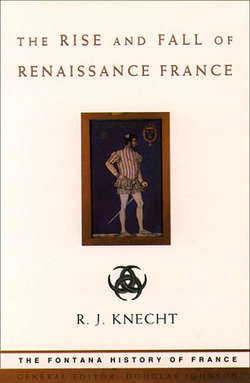Читать книгу The Rise and Fall of Renaissance France - R. Knecht J. - Страница 36
The ‘Perpetual’ Peace of Fribourg (29 November 1516)
ОглавлениеIn Austria, meanwhile, Cardinal Schiner had been urging the Emperor Maximilian to invade Milan and restore the Sforzas to power. The emperor could count on the support of some Swiss and of Henry VIII, whose jealousy had been aroused by the French victory at Marignano. Early in March 1516, Maximilian invaded north Italy. He reached the outskirts of Milan, but two days later he suddenly decamped, leaving his troops in the lurch. His ignominious flight enabled Francis to come to terms with the Swiss. On 29 November the so-called ‘Perpetual Peace of Fribourg’ was signed. Francis agreed to pay a war indemnity of 700,000 écus to the cantons. He also promised them 300,000 écus for the castles of Lugano and Locarno and fortresses in the Valtelline, and an annual subsidy of 2000 écus to each canton. The Swiss, for their part, promised not to serve anyone against France. Although less than a complete alliance, the treaty gave Francis the right to hire Swiss mercenaries in the future. The peace was called ‘perpetual’ because it was never formally broken. Swiss troops still guarded the king of France during the French Revolution.
On 11 March 1517, Francis, Maximilian and Charles of Spain signed the Treaty of Cambrai in which they agreed to assist each other if attacked and to join a crusade. Christendom needed to unite against the westward expansion of the Turks. Under Mehmet II they had captured Constantinople, penetrated deep into the Balkans and expelled the Venetians from Euboea. Now, under Selim the Grim, they were advancing once more: after overrunning Syria in August 1516, they invaded Egypt early in 1517. ‘It is time’, Leo X declared, ‘that we woke from sleep lest we be put to the sword unawares.’ In March 1518 he proclaimed a five-year truce among Christian powers and sent nuncios to the courts of Europe to gather support for a crusade, but they were more interested in problems nearer home than in the Balkans or eastern Mediterranean.
In September 1517, Charles arrived in Spain with an entourage of Flemings and took control of his kingdom. The Treaty of Noyon had become an embarrassment to him: he could not afford to pay the Neapolitan tribute and seemed disinclined to honour his pledge regarding Navarre. Yet Charles continued to assure Francis of his good intentions. In May 1519 a conference was held at Montpellier to sort out differences between the two monarchs, but it soon became a slanging match over the question of Navarre and collapsed altogether following the death of Boisy, who had led the French delegation.
